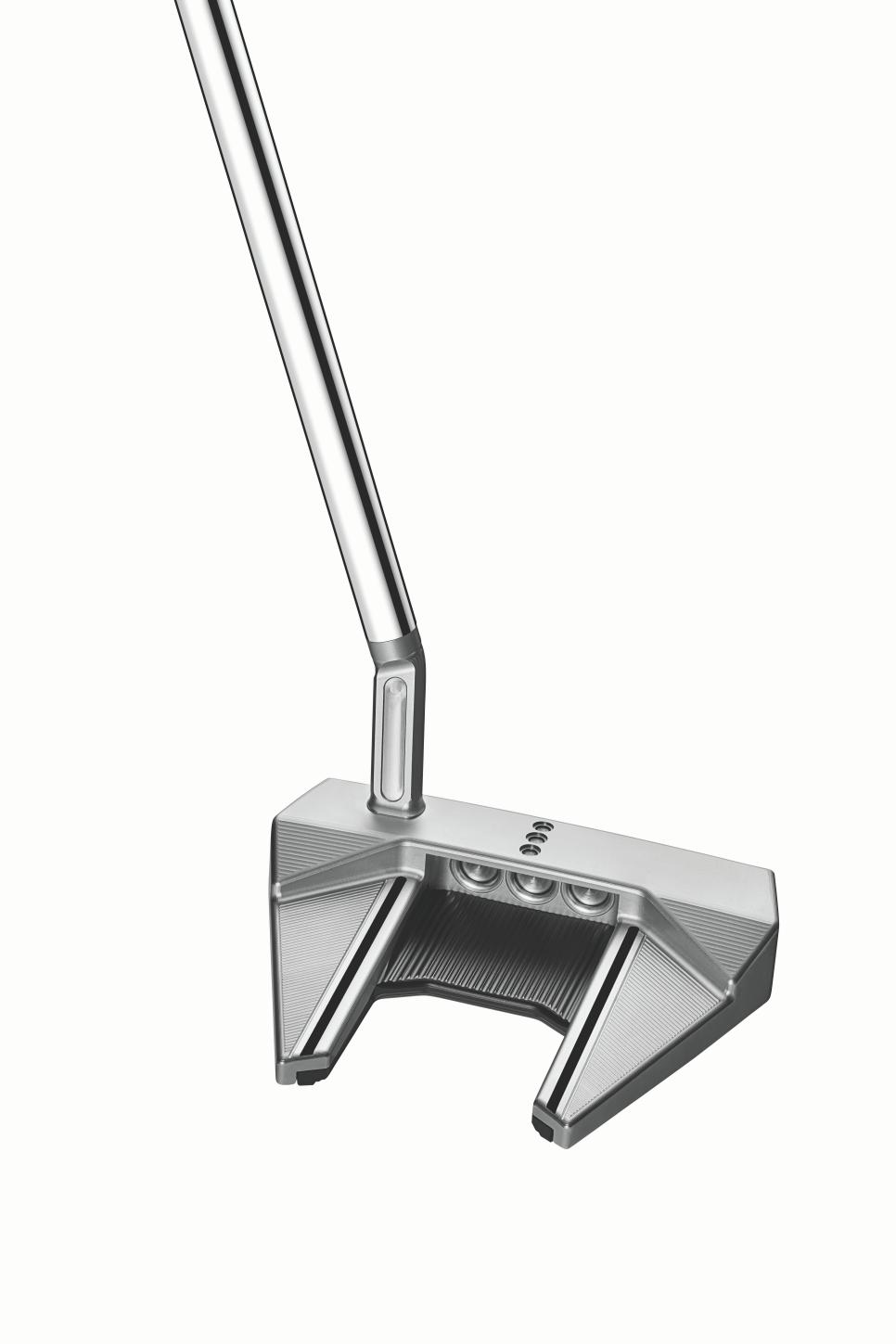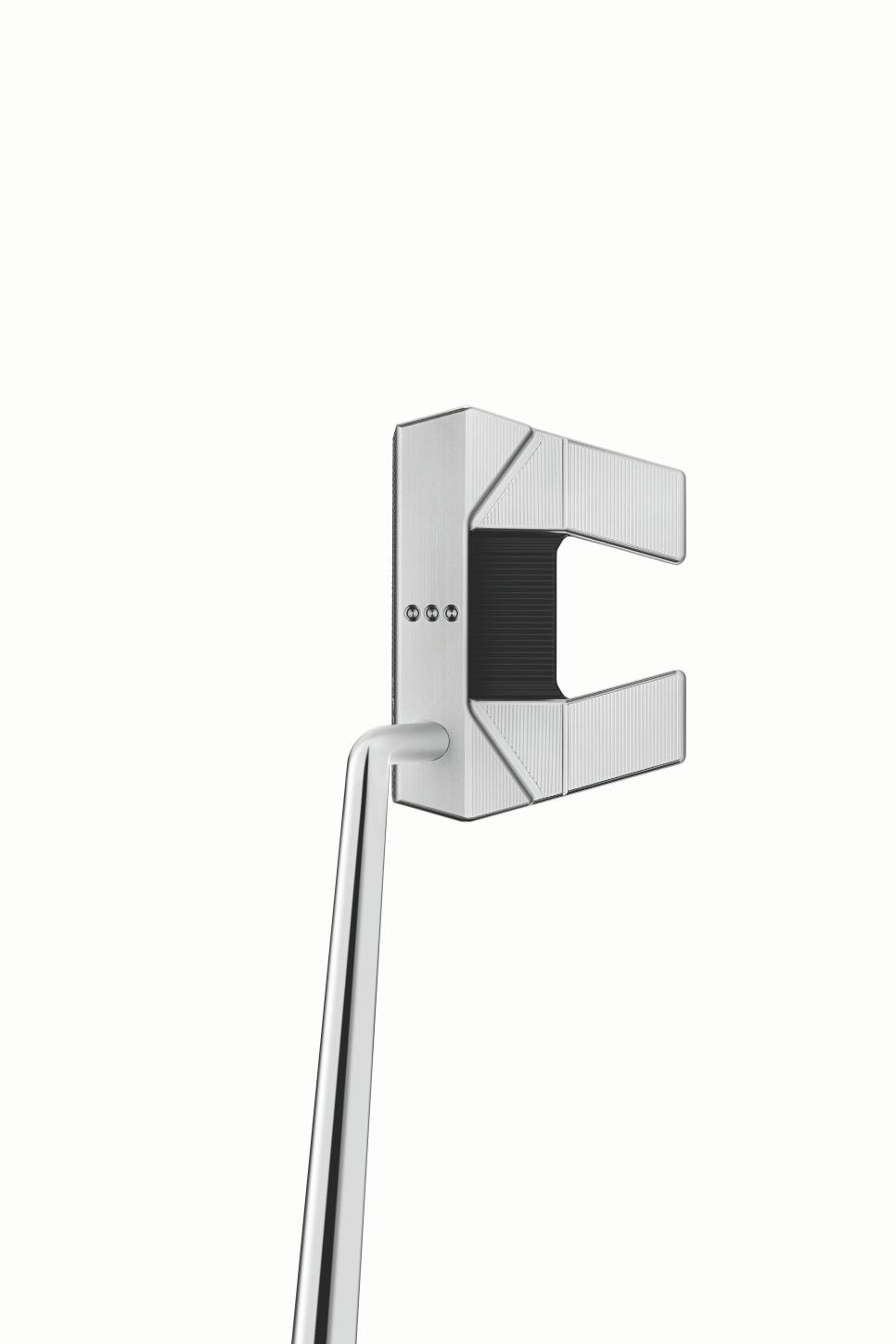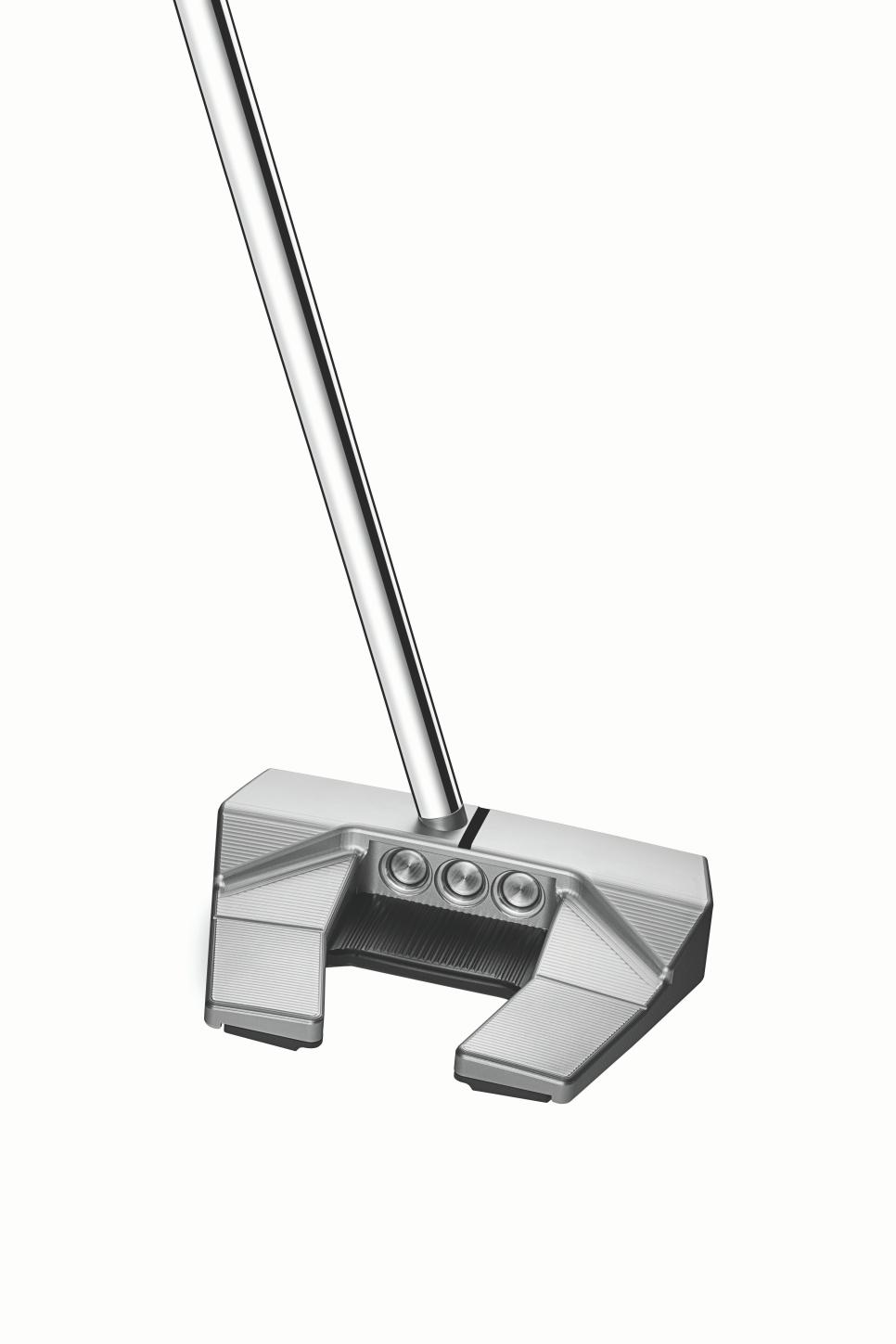WHAT YOU NEED TO KNOW: The Titleist Scotty Cameron Phantom line of putters for 2024 features 10 fresh takes on several familiar shaped modern mallets milled from 303 stainless steel with lightweight 6061 aircraft aluminium flange and sole plate components. There’s a renewed emphasis on alignment, both overtly in the markings and more subtly in the shapes and angles. The line also features the dual milling on the face for consistency of sound and roll.

OPTIONS, AVAILABILITY & PRICE: There are 10 models, with four main head styles:
—5 (slightly more compact version of the popular parallel curved-winged mallet with a single bend shaft);
—5.5 (5 with a jet neck);
—5s (5 with a no-offset, straight, centre shaft);
—7 (more angular, longer parallel fanged mallet with a single bend shaft);
—7.5 (7 with a jet neck);
—9 (open frame midsize mallet with long central double-line alignment marking with a single bend shaft);
—9.5 (9 with a jet neck);
—11 (deep heel and toe weighted mallet with double-line arrow alignment marking with a single bend shaft, also available in a 38-inch “Long Design” with 17-inch counterbalanced grip and heavier head with two 25-gram tungsten sole weights);
—11.5 (11 with a jet neck)
5, 5.5, 5s, 7, 7.5, 9, 9.5 available from March 29. 11, 11.5, 11 Long Design available from May 17. Stay tuned for Australian pricing.
3 COOL THINGS
1. See me. The Phantom line of putters has always put an emphasis on marrying forgiveness within the usual Scotty Cameron milieu of practical artistry. The 2024 continues that theme, but with some distinctive enhancements in the area of alignment. It’s a result of conversations with tour players, who not surprisingly seem interested less in how a mallet putter stabilises mis-hits and more in how it helps them see the intended line. Turns out how these players see the line requires different clues, and that’s why the 10 models in four head style incorporate different alignment features, ranging from dots to lines to arrows.

Of course, alignment markings were never going to be enough for a Cameron putter. For alignment to really work, it needed to go beyond the obvious, Cameron said.
“There’s some things we did with the shape of the head to really put some subtle cues in there to make it easier for them to line up and see that the putter’s pointed to the target,” he said. “What I had found is a lot of great players talked about even where they saw the shaft angle and how we needed to have that go down the target line like train tracks towards the hole.

“The visuals were so important, but it was how can we do this kind of subliminally where everything we do goes down the target line without it looking silly. We wanted it be the case where you pick it up and you don’t know why you like it, but there’s something telling me I like it and it’s easier to line up.”

Cameron pointed to the angles just off the heel and toe on each model that when viewed at address with the ball subtly form an arrow. On the deeper mallets that arrow theme carries repeats in the rear part of the flange. Of course, the alignment markings themselves go from the subtle (three dots) to the much more distinct like the double-lined arrow on the three Phantom 11 models.
2. Feel me. Cameron likes to say of each new revision to popular lines like the Select and Phantom, “How do we make it better, but, hey, don’t screw it up. Let’s just not redesign to design, let’s design to make it better.” Often, that means borrowing a successful idea from past versions. In the 2024 Phantom line, that meant adapting the dual face milling that first debuted in the Super Select line last year. The process involves milling the face twice, starting with a deeper mill for soft feel and then followed by a mid-milling that levels the peaks of the mill marks for more consistent feel and roll across the face.

3. Hear me. Unlike the mostly solid block 303 stainless steel Super Select line, these larger modern mallets necessarily incorporate a large aircraft grade aluminium sole plate. That allows for the larger, more forgiving shapes but can present problems with acoustics. Cameron and team, led by Austie Rollinson, senior director of putter research and development, focused especially on how the sole plate was connected to the steel body and how the heel and toe weight screws were one with the body of the putter.
The new models include new vibration dampening membranes on the inside of the aluminium sole plate to control unwanted vibration and sound. As well, the sole weights are positioned slightly more forward and closer to the face now.
“One of the things we noticed was where those screws and damping pads are placed and how much you have of it is really important to tune the sound exactly and to optimise it,” Rollinson said. “Moving the weights forward really gets that sole plate much more connected to the body at the front where the impact is, and the closer you are to the impact, the more that is going to move and moves less as you get further back. Getting the vibration damping pads further back is important so that as the vibration moves from the front to the back, those pads help to damp out any of that kind of high frequency to low frequency that’s not optimal in these to really get the sound consistent.”


Rollinson also said these designs also use a 40 percent thicker aluminium sole plate compared to the previous Phantom X models: “That makes it stiffer because aluminium is not as stiff as steel, and if it gets too thin, it can be moving in places you don’t want it moving.”
